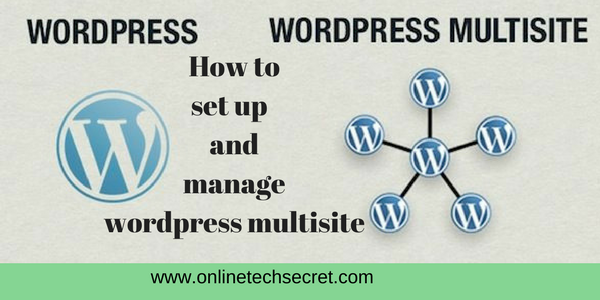A lot of people know about the WordPress multisite concept, but there are many WordPress users who avoid it, because they have no idea how to set one up. Don’t worry, I was in that position once too. As a theme developer I wanted to show some previews of my themes to people who wanted to test them. However, I didn’t want to create a separate WordPress installation for every theme I developed, so I had to find a better solution. I stumbled upon the multisite concept, but didn’t know how to implement it. Of course now I do know how to setup and use a WordPress multisite, and after reading this article you’ll be ready to setup your very own WordPress multisite as well.
So What is a Multisite Network?
For those of you who don’t know what a multisite is; A WordPress multisite is one WordPress installation with different websites attached to it in a network that you can manage from a network admin panel. You can use different themes and plugins for every website in the multisite network, but you’ll only have to install them once.
A multisite shares one single database and you won’t have to create extra folders. When you have a network up and running you just click “Add Site” from within your network admin panel fill in and save the required information and the new site will instantly be available, including with it’s own dashboard like you have with a normal WordPress installation.
For this tutorial I assume you already have a WordPress installation up and running, so we won’t go over installing WordPress. Instead we’re going to turn a regular WordPress installation into a multisite installation.
Making Your WordPress Multisite Installation ready
Setting up a WordPress multisite is probably easier than you think, I will show you how to do it in a few easy to follow steps. For this article I’m going to use a demo site. Before you start creating your WordPress multisite, I suggest you create a backup of your website (database and files), just in case anything goes wrong.
When you’re finished creating your backup, configure to the wp-config.php file in the folder of your WordPress installation. You can do this via Filezilla or via your web hosting control panel.
Don’t worry, you won’t have to do anything complex here, you just enter one single line of code. Enter the code below.
/* Multisite */ define( 'WP_ALLOW_MULTISITE', true );
That are actually two lines, but the first line is just a PHP comment so you can easily find the line below and you know that’s the line which controls weather your site allows multisite or not. Make sure you add this line of code just before the “/* That’s all, stop editing! Happy blogging. */” comment in the wp-config.php file.
Keep the wp-config.php file opened, because we’ll have to edit it again later.
Installing the WordPress Multisite
There should now be a new item in the tools menu on your WordPress dashboard that says “Network Setup”, click it. If you have plugins installed and activated, there will appear a message that says you have to deactivate your plugins before you can setup the network. So deactivate all your plugins. Go back to the network setup page and fill in the information, these fields speak for themselves.
Now go back to your wp-config.php file and follow the steps, the lines of code you’ll have to copy and paste are different for every multisite. They should be listed on the network setup page. Just follow the instructions there. You’ll also need to open your .htaccess file and copy and paste some lines in there, these are also all shown on the network setup page. Done? Good, now reload the page, you’ll be logged out of your WordPress dashboard.
WordPress Multisite Network Settings
When you log back into your site, you’ll land on the network admin dashboard where you can configure your multisite settings. You can change the network title and email from here, manage global registration settings for when a new user creates an account, new site settings for when someone creates a new site, upload settings so you can manage the maximum file size and allowed file types that can be uploaded throughout the network, language settings and menu settings.
Most of the options speak for themselves so I won’t go every single one of them right now. I suggest you take a close look to some of the options, especially the registration settings in which you can manage who can and who can’t register a new site. This is very important depending on what you want to use your multisite for.
Adding a New Site to The Network
To add a new site to your WordPress multisite network, in your network dashboard just go over to “Sites -> Add New”, fill in the required information and click on “Add Site”. Voila you’ve added a site to your multisite network, no need to create an extra directory or anything, that’s all.
Managing your sites’ Themes and Plugins
This is quite important, since you created a wordpress multisite network, I assume you want to activate different themes and different plugins on every site. This is very easy, just go to the network admin if you’re not already there. Install a new theme or plugin, don NOT click network activate if you don’t want the plugin or theme activated throughout your entire network. Instead configure to the dashboard of the site you do want the plugin or theme activated and go to the plugins or themes page respectively. Activate the plugin or theme and you’re done.
Congratulations! You now know how to work with a WordPress multisite, I hope you found this article useful and showed you that a multisite is not hard to set up at all.
Read Next : 6 Inspect Element Tips You Can Use While Designing WordPress Websites



